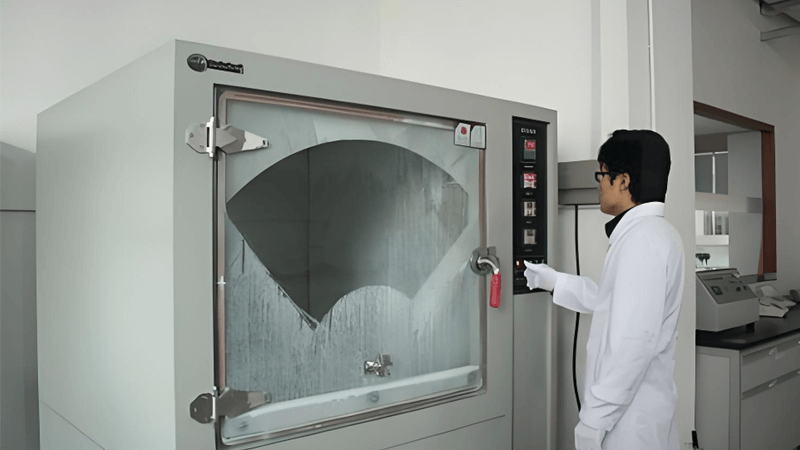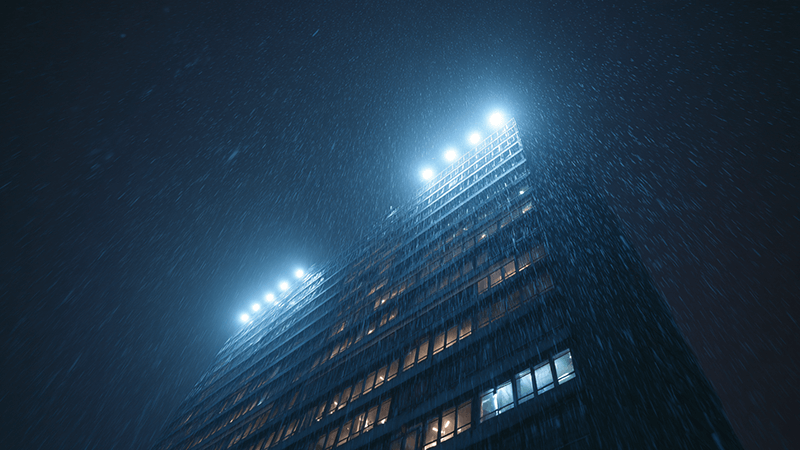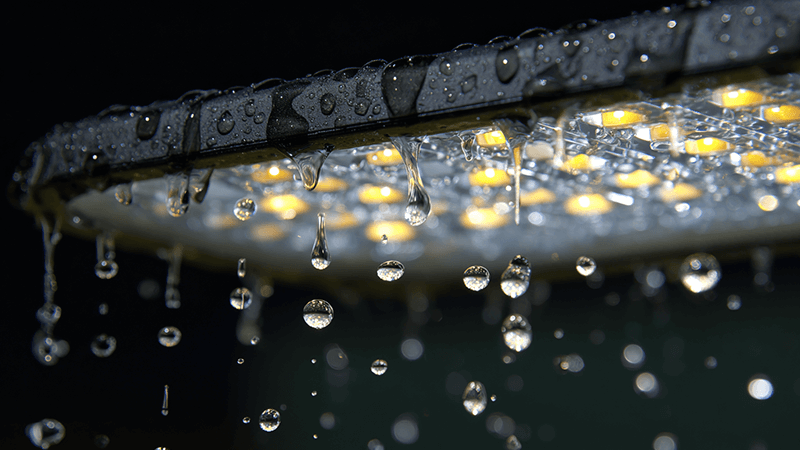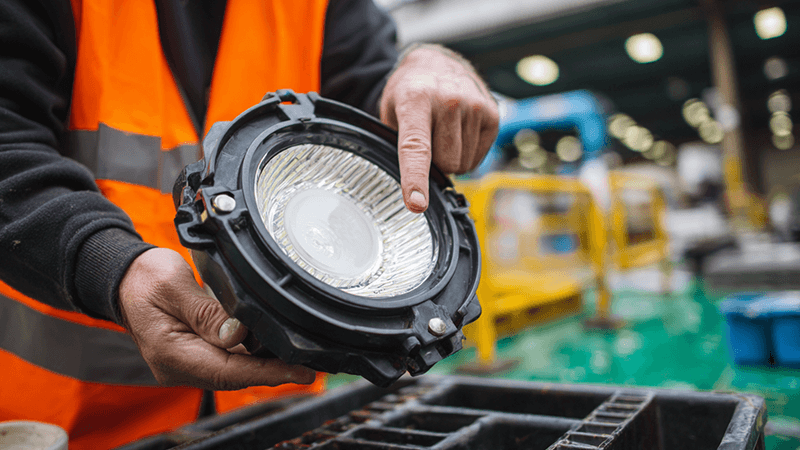Your expensive DMX floodlights are failing outdoors. Water damage is costly, ruins projects, and hurts your reputation. Understanding IP ratings is your first line of defense against these failures.
IP65 and IP67 ratings are standards that certify an enclosure’s protection against solids and liquids. For outdoor DMX RGBW LED floodlights, they ensure dust can’t get in and water won’t cause damage, preventing short circuits, corrosion, and guaranteeing the light’s longevity and performance.

Choosing the right outdoor lighting feels like a gamble sometimes. You see the specs, you read the promises, but you still wonder if the product will hold up during the first heavy downpour. I’ve been in this industry for a long time, starting on the factory floor and building my own manufacturing business. I’ve seen firsthand what separates a truly robust floodlight from one that’s just a failure waiting to happen. It often comes down to one simple, but crucial, detail: the IP rating. But not just the number on the box, the real quality behind it. Let’s break down what these ratings really mean for your projects.
Is IP65 safe for outdoor lighting?
Worried your IP65 lights won’t survive a heavy storm? It’s a common fear. A single failure can compromise an entire installation, leading to costly replacements and unhappy clients.
Yes, IP65 is safe and widely used for most outdoor lighting applications. It certifies that the light is completely protected from dust and can withstand low-pressure water jets from any direction. This makes it ideal for handling rain, snow, and standard irrigation sprinklers effectively.

When a spec sheet says "IP65," it’s making a specific promise. The "6" means it’s fully dust-tight, which is critical in many environments, from dusty construction sites to desert climates like the UAE. The "5" means it can resist water from a 6.3mm nozzle from any angle. In simple terms, it’s built to take on the rain without any issues. For most wall-mounted floodlights, architectural lighting, and general-purpose landscape fixtures, IP65 is the workhorse standard.
However, the number itself is meaningless without genuine testing and quality manufacturing. I once worked with a client, let’s call him Shaz, a purchasing manager like you. He bought a batch of floodlights advertised as IP65 from a new supplier to save costs. They looked great, but after the first major rainstorm, over 30% of them failed. Water had seeped past the seals. The problem wasn’t the IP65 standard; it was the manufacturer. They never actually performed the rigorous testing required.
A proper IP test isn’t just a quick spray with a hose. It involves a controlled environment and specific pressures for a set duration. Here’s what to look for:
Real vs. Fake IP65 Certification
| Quality Factor |
Reputable Manufacturer (True IP65) |
Low-Quality Supplier (False IP65) |
| Gasket Material |
High-grade silicone or EPDM, which resists heat and aging. |
Cheap foam or rubber that cracks and shrinks over time. |
| Housing Design |
Precision-molded casing with deep, continuous channels for the gasket. |
Poorly fitting parts with gaps and inconsistencies. |
| Testing Process |
Each batch is sample-tested in a dedicated chamber with calibrated water jets. |
A quick spray with a hose, or no test at all. Just a stamp on the box. |
| Assembly |
Assembled in a clean environment with torque-controlled screws to ensure even pressure on the seal. |
Careless assembly, overtightened screws that deform the seal, or loose screws. |
If a light also has poor heat dissipation, it’s another red flag. Good sealing and good thermal management come from good engineering. A company that cuts corners on one is likely cutting corners on the other. For Shaz, the lesson was clear: a cheap light becomes very expensive when you have to replace it.
What is the difference between IP65 and IP67 protection?
Choosing between IP65 and IP67 feels confusing. One wrong choice could lead to drowned lights, project delays, and a damaged reputation. Let’s clear this up simply.
The key difference lies in their water protection level. IP65 protects against low-pressure water jets (like rain or a hose), while IP67 offers protection against temporary immersion in water up to 1 meter deep for 30 minutes. The choice depends on the specific installation environment.

Both IP65 and IP67 offer the highest level of dust protection (indicated by the first digit, ‘6’). The difference is all about water. Think of it in terms of real-world scenarios.
I remember advising a project contractor in Dubai who was lighting a large commercial plaza. The plan included wall-mounted fixtures to highlight the architecture and in-ground uplights near a prominent water feature. He initially planned to use IP65 for everything to standardize the inventory. I strongly advised against it. While IP65 was perfect for the wall-mounted lights that would only ever see rain, the in-ground units were a different story. The area around the water feature was prone to collecting water during heavy rain or if the drainage system temporarily clogged. It was a clear risk for temporary submersion.
We specified IP67 lights for the ground-level positions. Six months later, a blocked drain caused the area to flood for over an hour. All the IP67 lights survived without a single failure. The small additional cost for the IP67-rated fixtures saved him from a massive replacement bill and a major headache.
Here is a simple breakdown to help guide your decision:
IP Rating Breakdown
| Rating |
First Digit (Solids) |
Second Digit (Liquids) |
Best Use Case |
| IP65 |
6: Dust Tight |
5: Protected against water jets |
Wall-mounted lights, pole lights, general architectural lighting exposed to rain. |
| IP67 |
6: Dust Tight |
7: Protected against temporary immersion (up to 1m for 30 min) |
In-ground lights, pool-adjacent areas, dock lighting, locations with poor drainage or flood risk. |
For a purchasing professional, making this distinction is not just a technical detail; it’s a critical risk management decision. Choosing the correct rating for each application demonstrates expertise and protects the project’s long-term value.
What happens if IP65 gets wet?
You see water beading on your new IP65 floodlight after a storm and feel a moment of panic. Is it damaged? Will it fail tonight? Let’s put that fear to rest with facts.
Nothing bad happens. An IP65-rated light is specifically designed to get wet from rain, sprinklers, or splashes. Its seals prevent water from entering the housing, so the internal electronics, drivers, and LED chips remain completely safe and dry. The light will continue to function normally.

The entire purpose of the IP65 rating is to give you peace of mind in wet conditions. The housing, lens, and cable entries are sealed with high-quality gaskets to create a barrier. So, when it rains, the water simply washes over the exterior.
But what if the seal fails? This is where the difference between a quality product and a cheap one becomes clear. If water does get inside a DMX floodlight, it creates a cascade of problems.
- Immediate Short Circuit: Water is conductive. The first thing it will likely hit is the printed circuit board (PCB) for the DMX controller or the LED driver. This can cause an immediate short circuit, tripping a breaker and causing the light to go dark permanently.
- Corrosion and Slow Failure: Even a small amount of moisture or condensation can start a slower, more sinister process. It will begin to corrode the tiny solder joints and electronic components on the boards. This leads to flickering, incorrect color rendering in an RGBW light, or a loss of DMX control before the light fails completely.
- Compromised Power Adapter: In some floodlight designs, the power driver is a critical component. A low-quality, non-isolated driver is extremely vulnerable to moisture. I’ve seen cases where a small leak led to a driver failure that sent a power surge to the LED board, destroying the entire light. A quality manufacturer uses reliable, well-protected power components as a second line of defense.
- Reduced Light Output: Sometimes the light doesn’t fail electrically, but visually. Moisture that gets trapped inside can condense on the inner surface of the glass lens. This condensation scatters the light, ruins the beam angle, and can significantly reduce the perceived brightness and lumen output. The customer is left with a dim, patchy light, even if it’s technically still "working."
A properly manufactured IP65 light prevents all of this. Getting wet is part of its job description. The real danger is not the water outside, but the potential for it to get inside a poorly made product.
What is IP65 in LED lights?
The term "IP65" is thrown around constantly on spec sheets. But what does it actually mean for the quality, reliability, and lifespan of your LED lights? It’s not just a number; it’s a promise.
In LED lights, IP65 is a standard that certifies the enclosure is completely dust-tight (the ‘6’) and is protected against low-pressure water jets from any direction (the ‘5’). It signifies the light is engineered for durability and longevity in typical outdoor environments.

For a purchasing manager like Shaz in the UAE, understanding the two parts of the IP65 rating is essential for sourcing truly robust products.
The ‘6’ for Complete Dust Protection
This is the highest level of protection against solid objects. It means the enclosure is hermetically sealed to prevent any dust from getting inside. Why does this matter so much? Dust is a silent killer of LED fixtures.
- Overheating: Dust can accumulate on the internal electronics and, more importantly, on the heat sink. This layer of dust acts as an insulator, trapping heat inside the fixture. This is a direct cause of premature failure in LEDs and drivers. A manufacturer claiming to have great thermal control but failing on dust protection is being dishonest.
- Reduced Light Output: Dust that settles on the LED chips or the inside of the lens will block light, causing the fixture’s brightness to drop over time, a problem known as lumen depreciation.
The ‘5’ for Water Jet Protection
This part of the rating ensures the light can withstand rain and cleaning with a standard hose. It’s the baseline for any product that will be installed outdoors and exposed to the elements. The key is in the testing—a reliable manufacturer will use calibrated equipment to ensure every seal, from the main housing to the cable gland, can hold up under pressure.
IP Rating as a True Mark of Quality
Ultimately, a legitimate IP65 rating is an indicator of overall manufacturing quality. A factory that invests in the precision engineering, quality materials (like silicone gaskets), and rigorous testing needed to achieve a true IP65 rating is a factory you can trust. They are not cutting corners.
When I was younger, I visited a factory that claimed all its lights were IP65. Their "testing chamber" was a guy in the corner of the warehouse with a garden spray bottle. That’s not a real test. A serious manufacturer’s process is completely different.
| Process Step |
High-Quality Manufacturer |
Low-Quality Manufacturer |
| Design |
Molds are engineered for perfect fits with deep gasket channels. |
Generic, ill-fitting molds are used. |
| Materials |
Automotive-grade silicone gaskets are standard. |
Cheap foam seals that degrade quickly. |
| Assembly QC |
Screws are tightened with calibrated torque drivers for even pressure. |
Screws tightened by hand, leading to uneven seals. |
| Final Testing |
Batch testing in a pressurized water chamber. Results are documented. |
"Spray and pray" method, if any testing is done at all. |
When you source an IP65-rated DMX floodlight, you’re not just buying a number. You are buying the assurance that comes from a commitment to quality engineering, from the housing mold down to the final screw. It’s the best way to ensure your projects shine brightly for years to come.
Conclusion
Choosing the right IP rating, whether IP65 or IP67, is vital for your outdoor DMX floodlights. It ensures protection from dust and water, guaranteeing long-term performance and project reliability.